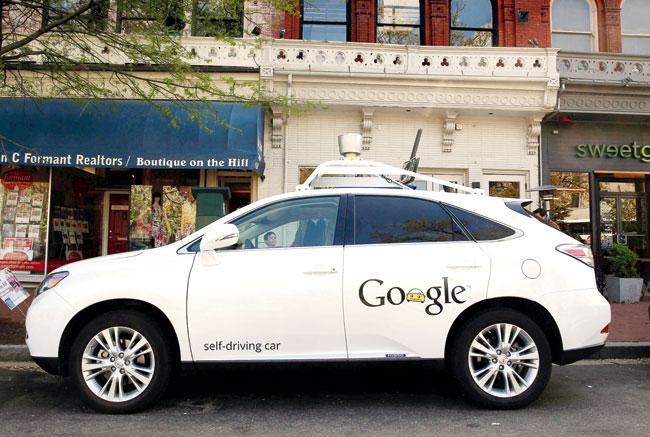Google says its driverless cars Lexus RX 450H are busy mastering California's streets and could go public by 2017

Googleu00c3u0083u00c2u00a2u00c3u0082u00c2u0080u00c3u0082u00c2u0099s Lexus RX 450H self-driving car is seen parked on Pennsylvania Avenue in Washington DC. Pic/AFP
London: In a blog post, Google said its self-driving cars have now mastered motorway driving. But city driving — with its obstacle course of stray walkers, bicyclists and blind corners — has been a challenge for the cars’ computers.

Google's Lexus RX 450H self-driving car is seen parked on Pennsylvania Avenue in Washington DC. Pic/AFP
ADVERTISEMENT
Project leader Chris Urmson said test cars could now handle thousands of urban situations that would have stumped them a year ago. “We’re growing more optimistic that we’re heading towards an achievable goal — a vehicle that operates without human intervention,” he wrote.
His post was the company’s first official update since 2012, on progress towards a driverless car that has been underway within the company’s secretive Google X lab. The firm said its goal is to make the cars public by 2017.
How it works
To begin with, human drivers would be expected to take control if the computer fails. The promise is that, eventually, there would be no need for a driver. Passengers could read, daydream, sleep — or work — while the car drives.
Google maintains that computers will one day drive far more safely than humans, and part of the company’s pitch is that robotic cars can reduce traffic fatalities. The basics are now in place. The task for Google now is perfecting the technology strapped onto its fleet of about two dozen Lexus RX450H SUVs.
Sensors including radar and lasers create 3D maps of a self-driving car's surroundings in real-time, while Google’s software sorts objects into four categories. These include moving vehicles, pedestrians, cyclists and static objects such as signs, curbs and parked cars.
Initially, the car’s capabilities were fairly crude. A group of pedestrians on a street corner registered as a single person. Now, the technology can distinguish individuals, according to Google spokeswoman Courtney Hohne.
 Subscribe today by clicking the link and stay updated with the latest news!" Click here!
Subscribe today by clicking the link and stay updated with the latest news!" Click here!







